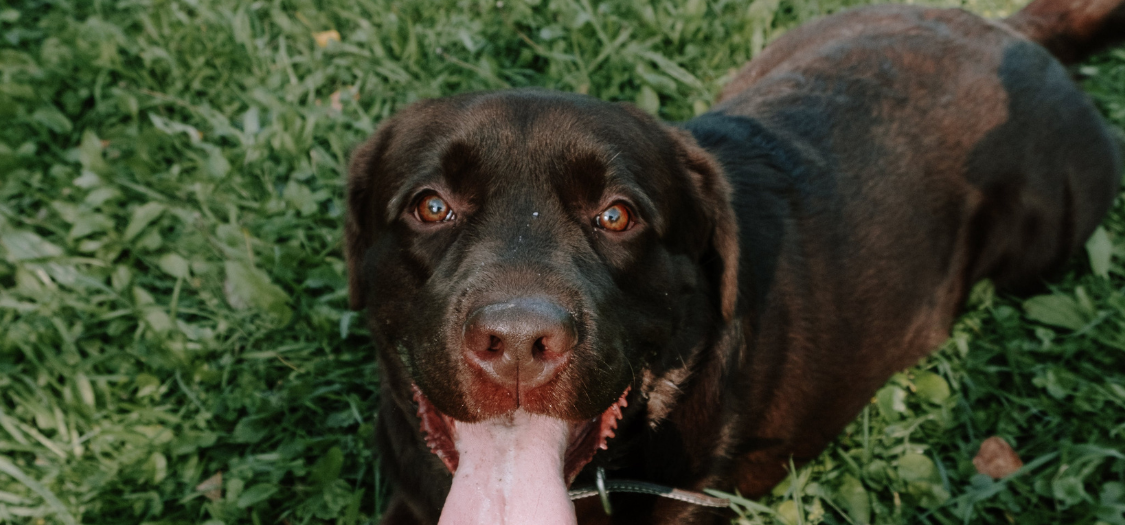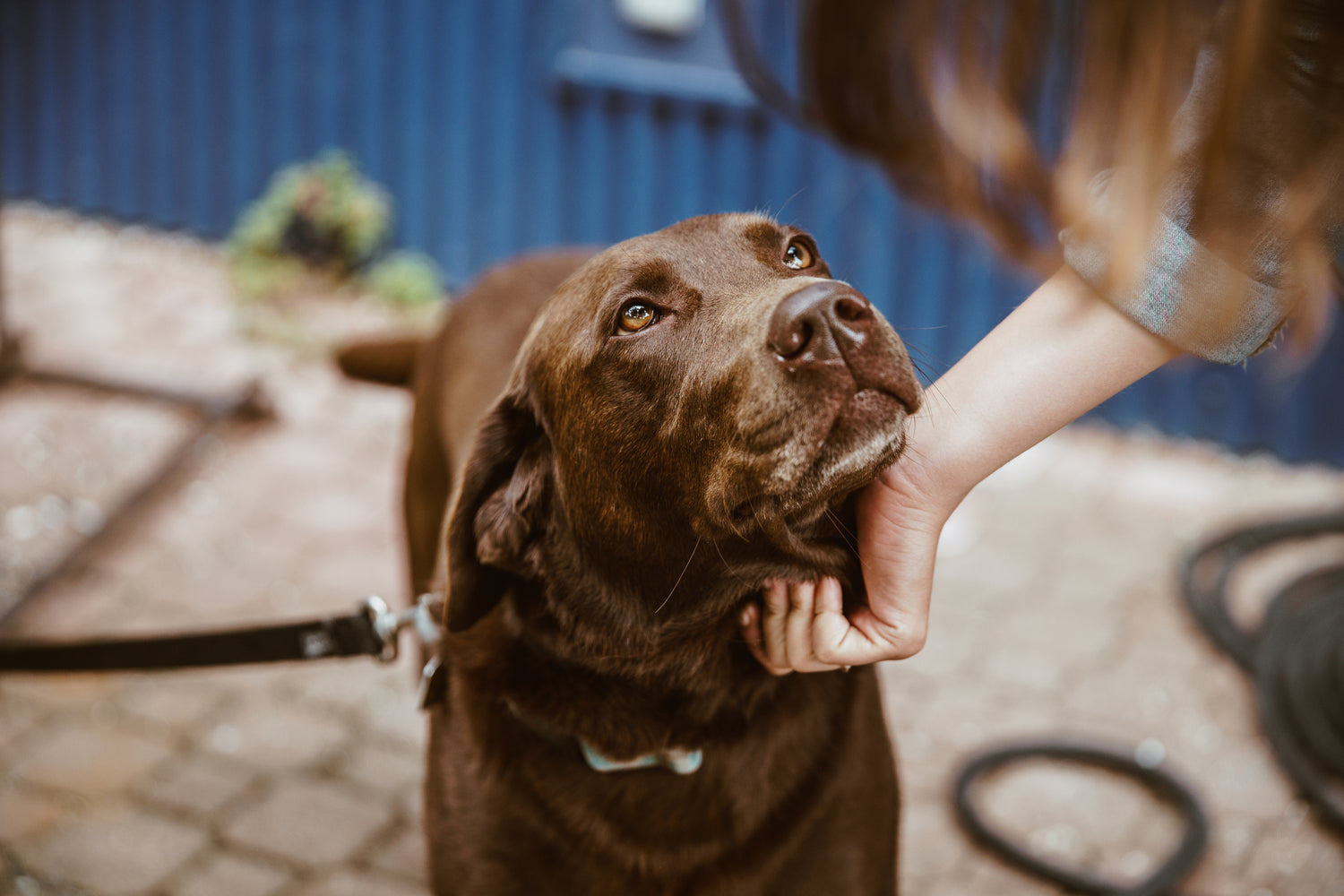Does My Dog Have Hip Dysplasia?
What Should I Do?

Once the symptoms of hip dysplasia have become evident, and led to a diagnosis, there are two routes to deal with hip dysplasia for dogs. Surgery is one, usually for severe hip dysplasia, and conservative management is the other.
Even if your dog does undergo surgery for hip dysplasia, knowing about the different methods of conservative management will be helpful to you because, to ensure your dog experiences an optimal recovery, these strategies are also used pre- and post-surgery.
The Orthodog Hip Brace was designed by a US nationally certified massage therapist, Elizabeth Eve, who already had experience working with braces on humans and understood anatomy, for her own dog who was suffering from terrible hip joint problems. She worked in close collaboration with Dr Eddie Heath, a vet, and Dr. John Faherty, a small- and large- animal board certified chiropractor. As is often the case with these products, when an owner is driven to find a solution for their own dog, that passion and commitment shines through the quality and design of the product. The result is a brace that’s made of quality materials and gives dogs with hip dysplasia a chance for improved mobility and less pain. If you notice your dog limping, or experiencing weakness in their hind legs, the Orthodog Hip Brace may help alleviate these symptoms.

Balto Life - Dog Hip Dysplasia Brace’s unique design means targeted compression is applied to the hip joints, stabilising it and reducing pain. It has a customisable fit and is made of durable, quality materials. It’s often recommended by vets for its ease of use, and track record for improving dogs’ mobility, quality of life and successfully minimising the symptoms of dog hip dysplasia.
Tailwindpets Hip Brace for Dogs a customised product that’s designed to stabilise and warm your dog’s hip joints, where the articulation happens, reduces pain and boosts muscle activity. It works to increase the connection between the femur head (top of the thigh bone) and acetabulum (hip socket). It’s double sided and goes over both hips. As a custom product, you’ll be asked for more measurements than usual during the ordering process, and Tailwindpets will build a new brace for your dog for the best fit.
Ortocanis Hip Brace for Dogs made of dynamic, high resistance neoprene and provides support to compression to the joints and muscles in the lower back. If your dog’s active but suffers from arthritic hips, mild to moderate hip dysplasia, decreased endurance during activity, hip and/or lower back pain/weakness and hind leg lameness because of damage to the sacral vertebrae, this is a dog hip brace to consider.
LISPOO Hip Support Brace for Dogs is a brace that’s suitable for mild to moderate hip dysplasia, hip and lower back pain, back leg weakness and/or limping. Good for post-surgery care and also for older dogs who are generally having trouble getting around. It can be worn all day once a dog’s acclimatised to wearing it. Made of a comfortable, breathable sandwich mesh material, it is lightweight but strong enough to provide appropriate support. A version with handles is also available, so you can rear leg support to your dog.

Hip dysplasia in dogs is a common orthopaedic condition that affects dogs of any breed or age. Large breeds are particularly prone to developing it. Hip dysplasia even in a puppy is possible. Hip dysplasia can be very painful, and significantly affect your dog’s mobility.
The word ‘dysplasia’ means abnormality of development.
The hip joint is unstable and this can be caused by poor conformation of the hip bone (usually a hip socket that’s too shallow) or the ball of the thigh bone being misshapen. There can also be ligament laxity. The ‘ball and socket’ relationship of the hip joint and thigh bone doesn’t work well.
Normally the surfaces of the two glide together well. With hip dysplasia they rub together uncomfortably which results in inflammation, possible microfracturing of the bone and degeneration of the hip cartilage, swelling, and eventually arthritis (i.e. accelerated wear and tear). All of this is painful for your dog.
Using a hip dysplasia brace for dogs, which is part of a conservative management approach, is one way to help your dog with hip dysplasia feel more supported and comfortable. They support your dog’s hip joints, as they’re designed to compress and hold the tops of the thigh bones into the hip sockets. This stabilises the hip joints and is why dog hip braces are considered a useful component of treatment for hip dysplasia in dogs.
Zoomadog has put together a list of the Top 5 dog hip dysplasia braces to help you choose the one that’s most suitable as treatment for hip dysplasia in your dog, if you’re following a conservative management approach, or want to help your dog recover from surgery.
Consult your vet if you notice your dog suffering from any of the signs of hip dysplasia in dogs, as a brace might make all the difference.
When choosing a hip brace for your dog, we recommend that you do it in conjunction with either your vet, your dog’s physiotherapist, or orthopaedic specialist.
Dog hip dysplasia can be upsetting to witness, if your beloved dog’s struggling to maintain their strength and mobility. Seeking guidance from your vet, and investing in a good quality dog hip support in the guise of a dog hip brace, can make a world of difference. A good hip brace for dogs can help lessen the amount of pain your dog’s feeling, and give them support to be able to move with more confidence again. They can also be a lifesaver if, for whatever reason, your dog’s not a good candidate for surgery. Sometimes, the dog hip dysplasia surgery cost can be prohibitive. If that’s the case, a dog hip brace can go some way to helping your dog. Using the above guide should help you find the best brace for your dog.
What Should I Do?
What Are The First Signs of Hip Dysplasia In Dogs?
What Are The Different Levels of Hip Dysplasia in My Dog?
What Should I Do?
What Should I Do?
For Hip Dysplasia For A Dog?
What Should I Do?
My Dog Has Very Bad Arthritis In His Hips. What Should I Do?
What Happens, Is It Successful, What I Should Know?
My Dog Is Too Old / Too Risky For Hip Dysplasia Surgery. What Are The Non-Surgical Options?
Can Physiotherapy and Hydrotherapy Help my Dog with Hip Dysplasia?
My Elderly Labrador has Hind Leg Hip Weakness. Does He Have Hip Dysplasia?
I Have a 13-year-old Border Collie with Hip Dysplasia in his Rear Right Hip. What Should I Do?
with Hip Dysplasia

We can help find the right solution for your dog
Feel free to give us a call on 01730 622544
or email us at woof@zoomadog.co.uk
Leave a comment